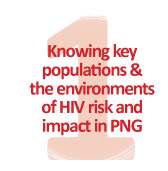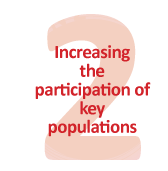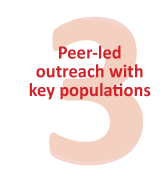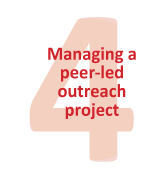Working with key populations on HIV prevention and care: The Tingim Laip Model
A toolkit to guide peer-based program development
Welcome to the Tingim Laip Toolkit. Tingim Laip (TL) is a peer-based HIV and sexual and reproductive health project that operated in 20 sites across ten provinces in PNG. TL was funded by the Australian Government and was a project of the PNG National AIDS Council (NAC).
This toolkit covers the work of the second phase of Tingim Laip (2010 – 2015) that was managed by Cardno Emerging Markets in collaboration with APMGlobal Health. TL employed and trained people from PNG’s key populations affected by HIV to provide peer education, accompanied referral and support to people at-risk of and affected by HIV in the sites in which it worked.
Volunteers and paid Field Officers from key populations were managed by a national team and by regional and site-level staff. Over the years, TL has built up a great set of tried-and-tested tools that we would like to share with you in the hope that you might continue the spirit of our work and use the things that we have learned to improve the outcomes of your work.
How to use this resource
This resource is divided into five sections. Click on the titles to open each section:
HIV in PNG
-
2013 - national HIV prevalence estimated at 0.65% with an estimated 31,945 PLHIV
-
2021 - projected national prevalence of 0.65% with an estimated 38,844 PLHIV
-
Enga, Western Highlands, Jiwaka and NCD are the only provinces with greater than 1% HIV prevalence in 2013
-
Hela, Western Highlands, Jiwaka, Chimbu, Oro, Madang and Manus provinces are expected to have a rising HIV prevalence between 2013 and 2021.
-
PNG now understood to have a HIV epidemic that is concentrated in certain geographical locations and among key populations:
- men and women who sell and exchange sex
- men who have sex with men
-
High HIV prevalence amongst female sex workers:
- 19% in Port Moresby and
- 2.7% in Eastern Highlands Province.
-
No data on MSM, but HIV prevalence amongst male sex workers in Port Moresby, some of whom are MSM, is high with 8.8% of men who sell sex living with HIV and 23.7% of transgender people who sell sex living with HIV.
A note on language
WES After consultation with key populations, TL used the term ‘Women Exchanging Sex’ (WES) to refer to sex workers and other women involved in transactional sex. This is because in PNG, as in may other places, transactional sex take on many forms. Some women in TL sites refer to themselves and each other as sex workers and sell sex regularly in guesthouses, bars and on the street. Other women reject that label or identity. They are clear that they are trading sex for money, food, shelter and/or security, but they do not see this as their job or as part of their identity. That is not to say that all women who label themselves as sex workers are happy with that as their job and would not prefer to be doing other work, or that all women who do not take on that label are unhappy with their involvement in transactional sex. It is much more complex than that.
TL uses the term WES as a short-hand way of referring to this population for the purposes of reporting only. In fact this is a very heterogeneous population with many different sub-populations at different levels of HIV risk and impact. We have relied on the experience and knowledge of the many women involved as Field Officers and Volunteers at local level (almost 100 of them in 2014 and all of them involved in some form of transactional sex), to tailor our work at local level to the needs of the women around them.
Key Populations (KPs) This is now the favoured term used to describe the people that HIV programs should focus on in areas where the epidemic is not generalised. It replaces the terms Most At-risk Populations (MARPs) and Key Affected Populations (KAPs). Each of these terms has its own problems, but KPs is now the agreed short-hand term. In TL2’s work, these populations have been: Women Exchanging Sex (WES); Mobile Men with Money (MMM); Men who have Sex with Men (MSM) –including in this case Transgender People; and People Living with HIV (PLHIV) – who might also be part of one, several (or none) of the other KPs.
Acknowledgments
Tingim Laip Project management would like to thank the staff, volunteers and people from communities and key populations for the time and commitment they put into making the project a success. This Toolkit represents their ideas and the innovative approach they took to improving the lives of people affected by HIV in PNG.






